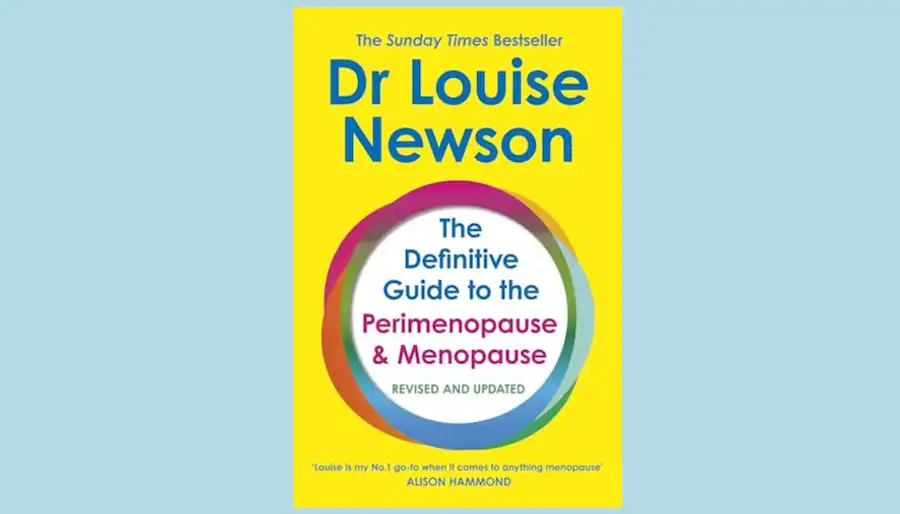Book Review: The Definitive Guide to the Perimenopause & Menopause
25 July 2024

The KOPI Book CLUB!
As an Osteopath, I specialise in the bio-mechanics of the beautiful human body. I am the eternal student of the body, an absolute privilege.
My book reviews are written to help you better understand and nurture your physical body. I hope you enjoy reading them, and if you have any books to suggest, I would be very interested to hear about them.
Book Review: The Definitive Guide to the Perimenopause & Menopause, Dr Louise Newson
"Louise is a voice you can really trust. I've learnt so much from her, and now you can too."
- Holly Willoughby
There’s a reason this book is a Sunday Times Bestseller—it is brilliant.
Okay, this is probably not a book to read to escape life, but it doesn’t pretend to be.
This book deals with the truth that every woman is going to go through perimenopause and menopause; thus, it offers the reader a comprehensive education as to exactly what this entails, alongside plenty of expert advice.
Historically, “the change” wasn’t discussed—it was “women’s problems,” and there was a silent expectation of stoicism about getting through what can be a challenging experience for a woman and, therefore, those around her.
Thankfully, people such as Dr. Louise Newson are breaking down these walls and shouting about what is happening (the more people in this tribe, the better).
Dr Newson differs in that she educates women, their partners, and medics all in one go (check out her website and free App called Balance).
When I trained as an Osteopath, we covered the human body in fine detail. Still, we did not cover menopause in any detail, and perimenopause was not a word I recall hearing until I started to read up on this stage of a woman’s life as a postgraduate and as a woman.
This is not a criticism of my university; it was the norm for many people who were training in medical professions at the time.
I have learned so much from this one book, including that it can take a woman 9 appointments (and some stressful tests) to be diagnosed with perimenopause (in the meantime, they have been diagnosed with migraine, palpitations, skin issues and a whole host of other “problems” that have one common cause).
This is not a swipe at GPs or any other medical practitioners – I am simply highlighting that perimenopause especially is overlooked and underrated in terms of just exactly how it can symptomatically present.
One of the most common symptoms is aching joints – hello to the Osteopath in me, this is now firmly on my radar when I speak to women, and not just of a “certain age” because, as Dr Newson eloquently explains, yes, there are normal ages for the perimenopause and menopause, but do not bank of those.
Dr Newson does not shy away from the fact that HRT has had a bit of a reputation – mainly due to the most floored research article ever, which scared medics and women alike – the link between breast cancer and HRT.
Dr Newson tackles this with cool intellect and solid research to show how safe HRT is for most women.
Once she has gone through this and the reader has up-to-date knowledge, Dr Newson then goes on to explain all the different types of HRT, how they work, who is suitable for them, the pros and cons (the pros far outweigh the cons; from heart health to bone health to brain health—I could go on), and how to go about deciding what HRT may work for you.
HRT, as Dr Newson explains, is not a panacea. A balanced, wholesome approach is needed from women to themselves for them to have a healthy perimenopause and menopause.
This includes reaching out for help, getting a diagnosis (and taking any HRT recommended if wished), exercise, dietary intake, sleep, and, more importantly, speaking to their family, friends and possibly colleagues about what they are going through.
From dentists, nutritionists, dermatologists, exercise gurus, and rights within the workplace– this book has contributions from leading experts on things that women need to be aware of as they head into this next chapter.
This book does not seek to lecture women; it simply informs and reassures them that they are not going crazy, that they are NOT alone, and, more importantly, that there IS help out there.
This is highlighted by Dr Newson, including real-life accounts from women (including her own experience) of varying backgrounds and ages and their journey into perimenopause and menopause.
If you are a woman and feel that your physical body is behaving in a way that you do not recognise, do you need to consider a hormonal influence?
Every woman and medical professional practitioner (GPs, osteopaths, physiotherapists – I could list many more professions, but you get the point) must read this book and pass it on. I also feel that partners of women need to read this book – it helps to gently show exactly what is occurring, why, and how it manifests.
Mothers, speak to your daughters and sons about this chapter of your life.
The more we normalise this conversation, the easier it will be for the next generation to understand perimenopause and menopause and, more importantly, recognise it.